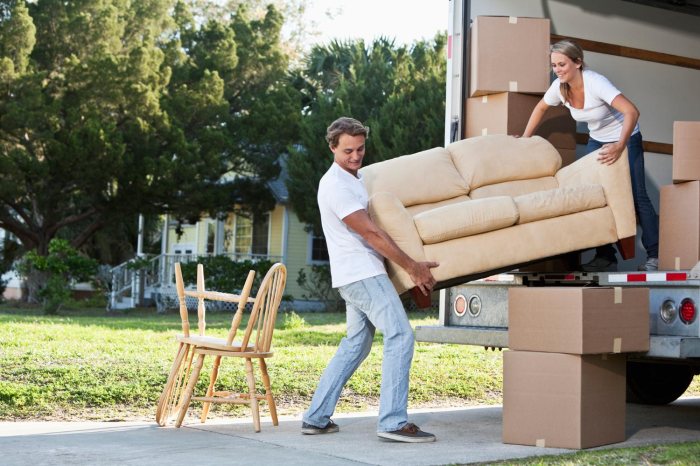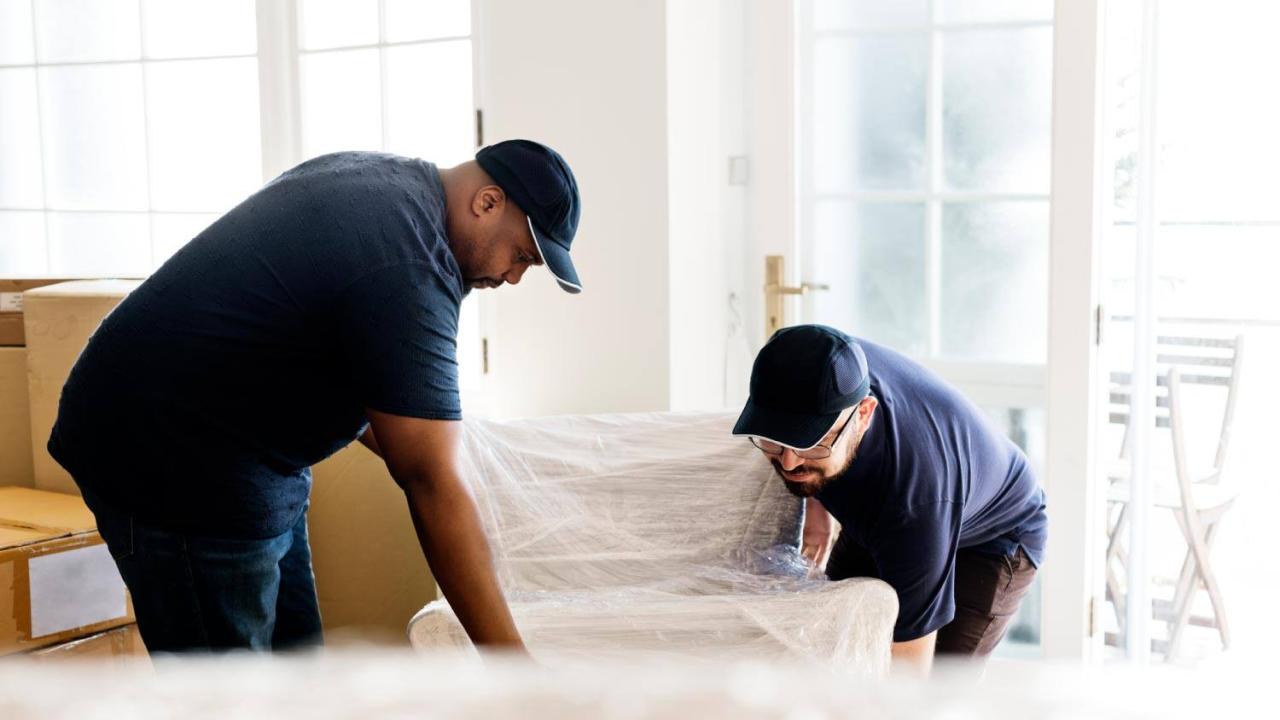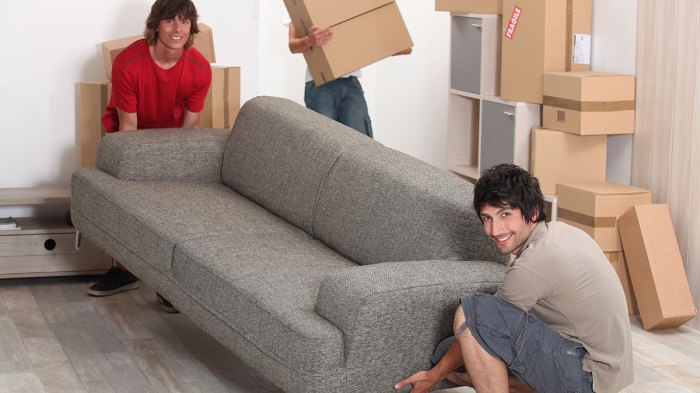Help moving furniture is an essential aspect of any move, whether you’re relocating your home or office. It’s a task that requires careful planning, proper techniques, and the right equipment to ensure the safety of both your furniture and yourself.
In this comprehensive guide, we’ll delve into the intricacies of help moving furniture, providing you with practical tips and expert advice to make your move a success.
From planning and preparation to loading, unloading, and furniture assembly and disassembly, we’ll cover every aspect of help moving furniture. We’ll also share valuable tips on furniture care and maintenance to keep your belongings looking their best after the move.
Moving Furniture Safely

Moving furniture can be a daunting task, but it doesn’t have to be dangerous. By following a few simple safety tips, you can avoid injury and make the process much easier.
Proper Lifting Techniques
- Always lift with your legs, not your back.
- Bend your knees and keep your back straight.
- Get a firm grip on the furniture and lift it smoothly.
- Do not twist your body while lifting.
- If the furniture is too heavy, get help from a friend or family member.
Using Proper Equipment
- Use a furniture dolly to move heavy furniture.
- Furniture dollies are available at most hardware stores.
- Furniture straps can also be helpful for lifting and carrying furniture.
- Furniture straps are available at most hardware stores.
Planning and Preparation
To ensure a smooth and efficient furniture moving process, it is crucial to engage in meticulous planning and preparation. This involves creating a comprehensive plan outlining the sequence of furniture movement and the designated paths, as well as ensuring the furniture is adequately prepared to minimize potential damage during the relocation.
Creating a Plan
- Establish the order in which furniture items will be moved, prioritizing fragile or heavy pieces for earlier handling.
- Determine the optimal path for moving furniture, taking into account doorways, hallways, and potential obstacles.
- Identify any potential hazards or obstacles that may impede the movement of furniture and devise strategies to address them.
Preparing the Furniture, Help moving furniture
- Remove any loose parts or accessories from furniture items to prevent damage during transit.
- Secure drawers and doors using tape or furniture straps to prevent them from opening unexpectedly.
- Protect furniture surfaces with blankets, padding, or shrink wrap to minimize scratches or dents.
Clearing the Path
- Remove any obstacles or clutter from the designated moving paths to ensure smooth and unimpeded furniture movement.
- Clear doorways and hallways of any rugs or mats that may create tripping hazards.
- Protect flooring with drop cloths or cardboard to prevent damage from furniture legs or heavy objects.
Loading and Unloading

Loading and unloading furniture safely and efficiently is crucial to prevent damage during transit. Here’s a detailed guide to help you do it right.
Loading Furniture
Before loading furniture, wrap and protect delicate pieces with blankets, bubble wrap, or packing paper. Use furniture pads to protect upholstered furniture from scratches and dents.
When loading, start with the heaviest pieces and place them at the front of the truck or trailer. Load bulky items like sofas and beds first, then smaller items on top.
Secure furniture with straps or bungee cords to prevent it from shifting during transport. Use tie-downs to keep larger items in place. Ensure all furniture is securely fastened before moving.
For those arduous moving tasks that require muscle, consider exploring havertys furniture fort myers . Their robust collection may inspire you with ideas to furnish your new abode, while their friendly staff can assist in selecting pieces that align with your vision.
Whether it’s a cozy couch or a stately dining table, they’ll help you find the perfect fit for your space, making your move a seamless and stylish affair.
Unloading Furniture
When unloading, start by removing the tie-downs and straps. Carefully lift furniture out of the truck or trailer and carry it to its designated spot.
Moving furniture can be a hassle, but it doesn’t have to be. If you’re looking for a reliable and affordable way to move your furniture, look no further than klog furniture . Our team of experienced movers will take care of everything, from packing and loading to unloading and assembling.
We’ll even help you move your furniture into your new home or office. So if you’re looking for a hassle-free way to move your furniture, contact klog furniture today.
For heavy furniture, use a dolly or hand truck to transport it. If you have to move furniture upstairs, use a furniture lift or enlist the help of additional movers.
Unwrap and inspect furniture for any damage. If you find any, contact the moving company immediately.
Furniture Assembly and Disassembly
Furniture assembly and disassembly are important aspects of moving furniture safely. By following proper techniques, you can avoid damage to your furniture and prevent injuries.
Identifying Furniture for Disassembly
Not all furniture requires disassembly. However, some types of furniture, such as beds, tables, and chairs, may need to be disassembled for easier transportation and handling. Identify the furniture that needs to be disassembled and determine the best method for each piece.
Tools and Materials
Before you start disassembling furniture, gather the necessary tools and materials. This may include:
- Screwdrivers (Phillips and flathead)
- Allen wrenches
- Hammer
- Pry bar
- Tape or labels
- Plastic bags or boxes
Disassembly Process
When disassembling furniture, follow these steps:
- Remove any cushions, pillows, or other loose items.
- Identify and remove all visible screws, bolts, or nuts.
- If necessary, use a pry bar to gently separate glued or nailed joints.
- Place disassembled parts in plastic bags or boxes and label them clearly for easy reassembly.
Reassembly Process
Once the furniture is disassembled, you can reassemble it in the new location. Follow these steps:
- Lay out all the parts and identify where each piece goes.
- Align the parts and insert the screws, bolts, or nuts.
- Tighten the fasteners securely but do not overtighten.
- Replace any cushions, pillows, or other loose items.
By following these steps, you can safely disassemble and reassemble furniture, ensuring that it arrives at its destination in good condition.
Furniture Care and Maintenance: Help Moving Furniture
Moving furniture can be a daunting task, but it’s important to take steps to protect your belongings from damage. With proper care and maintenance, you can ensure your furniture arrives at its new home in the same condition it left in.
Moving furniture can be a hassle, especially if you don’t have the right help. That’s where haverty furniture comes in. They offer a variety of moving services, from packing and loading to unloading and unpacking. So whether you’re moving across town or across the country, haverty furniture can help make your move a breeze.
Here are some tips on how to protect your furniture during a move:
Protective Measures
- Wrap furniture in blankets or moving pads:This will help to prevent scratches and dents.
- Use plastic wrap or stretch film:This will help to keep furniture clean and dry.
- Disassemble furniture when possible:This will make it easier to move and will reduce the risk of damage.
- Secure loose parts:Use tape or zip ties to secure any loose parts, such as knobs, handles, or legs.
- Load furniture carefully:Be sure to distribute the weight evenly and avoid overloading the moving truck.
Post-Move Care
Once your furniture has arrived at its new home, it’s important to clean and maintain it properly. Here are some tips:
- Wipe down furniture with a soft cloth:This will help to remove any dust or dirt that may have accumulated during the move.
- Use a furniture polish or cleaner:This will help to protect the finish of your furniture and keep it looking its best.
- Vacuum upholstered furniture:This will help to remove any pet hair, dust, or debris that may have accumulated.
- Repair any damage:If your furniture has been damaged during the move, it’s important to repair it as soon as possible. You can either do this yourself or hire a professional.
Furniture Repair and Restoration
If your furniture has been damaged beyond repair, you may want to consider having it restored. This is a specialized process that can be expensive, but it can be worth it if you have a piece of furniture that is particularly valuable to you.
There are many different furniture repair and restoration services available. Be sure to do your research and find a reputable company that has experience with the type of furniture you need to be repaired.
Summary

With the help of this guide, you’ll be equipped with the knowledge and skills to tackle any help moving furniture task with confidence. Whether you’re moving a few pieces of furniture across town or embarking on a long-distance move, our comprehensive coverage will ensure a smooth and successful transition.
Question & Answer Hub
How do I lift heavy furniture safely?
To lift heavy furniture safely, bend your knees and lift with your legs, not your back. Keep the furniture close to your body and avoid twisting or turning while lifting. If the furniture is too heavy to lift on your own, ask for help from a friend or family member.
How do I protect my furniture from damage during a move?
To protect your furniture from damage during a move, wrap it in blankets or furniture pads. You can also use plastic wrap to cover upholstered furniture. Be sure to secure all loose parts, such as legs or shelves, before moving the furniture.
How do I disassemble furniture for a move?
To disassemble furniture for a move, follow the manufacturer’s instructions. If you don’t have the instructions, you can usually find them online. Be sure to keep all of the hardware in a safe place so that you can reassemble the furniture later.